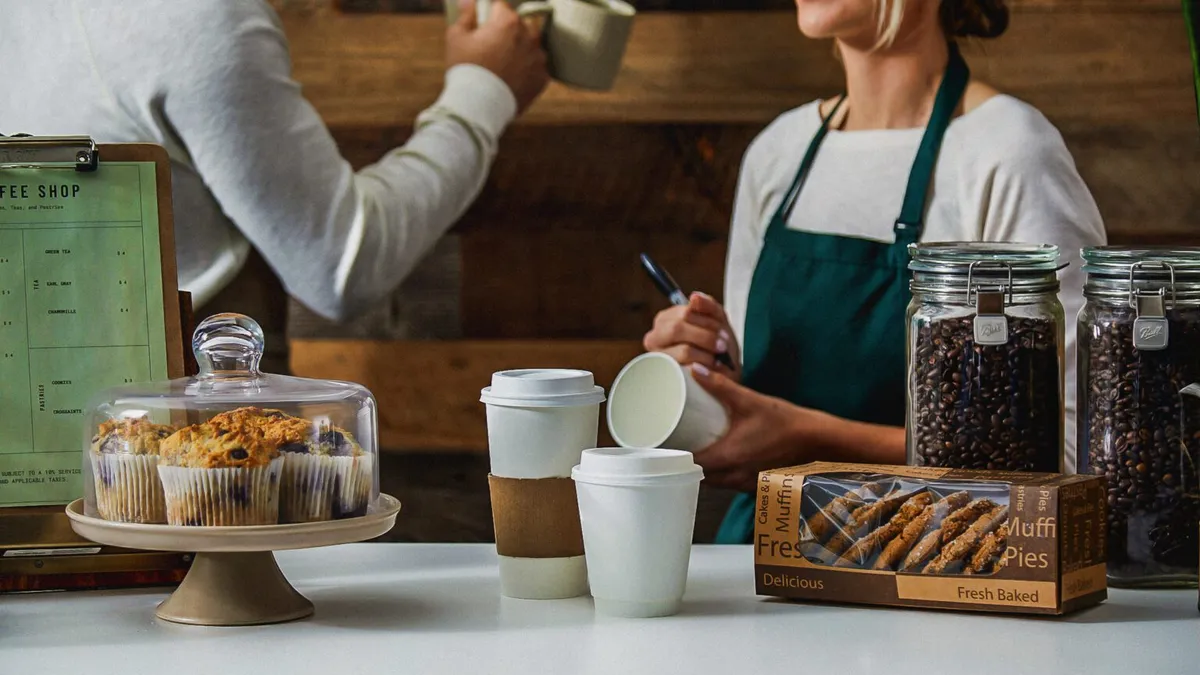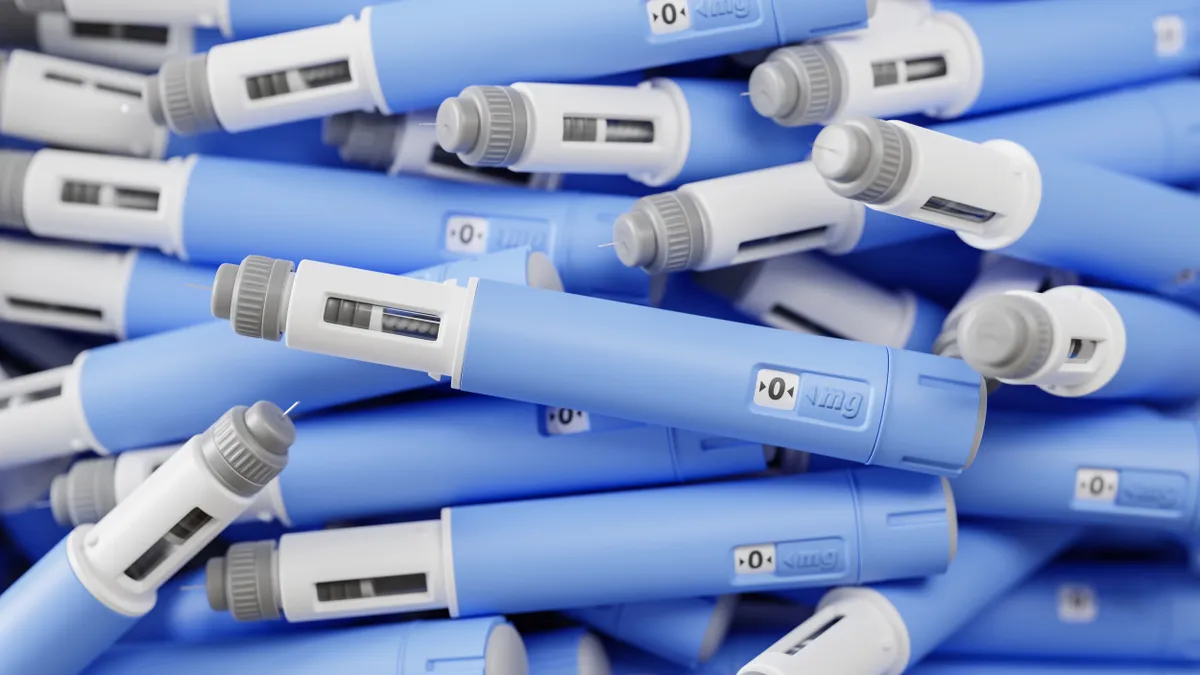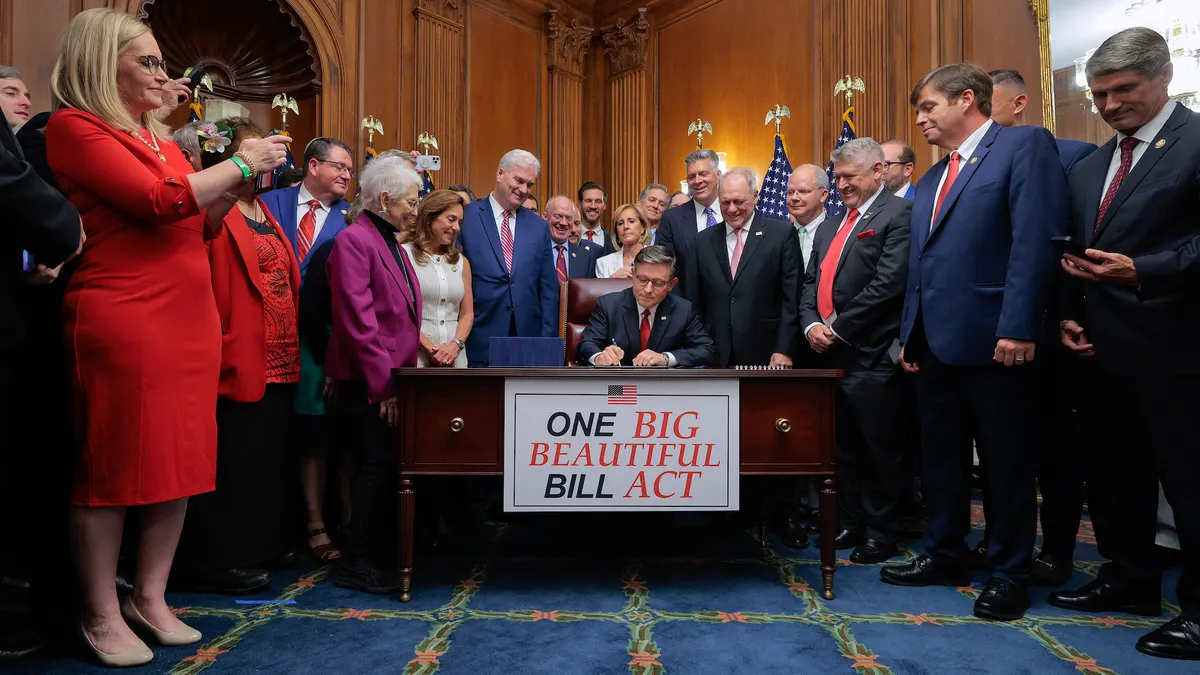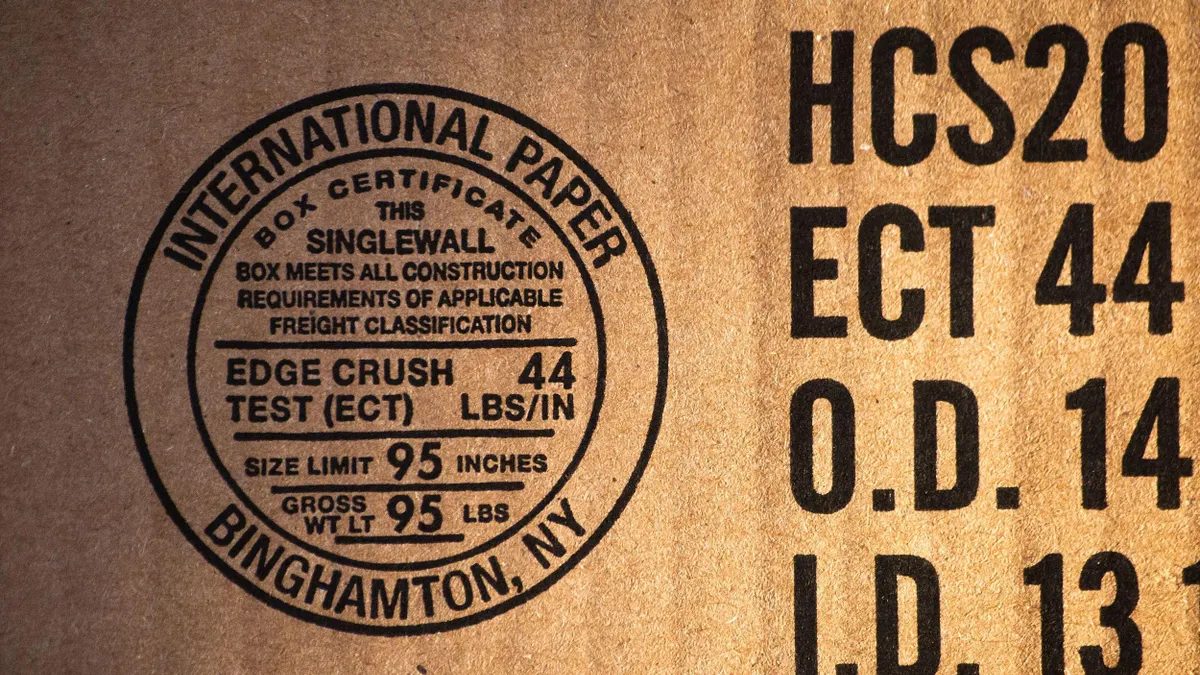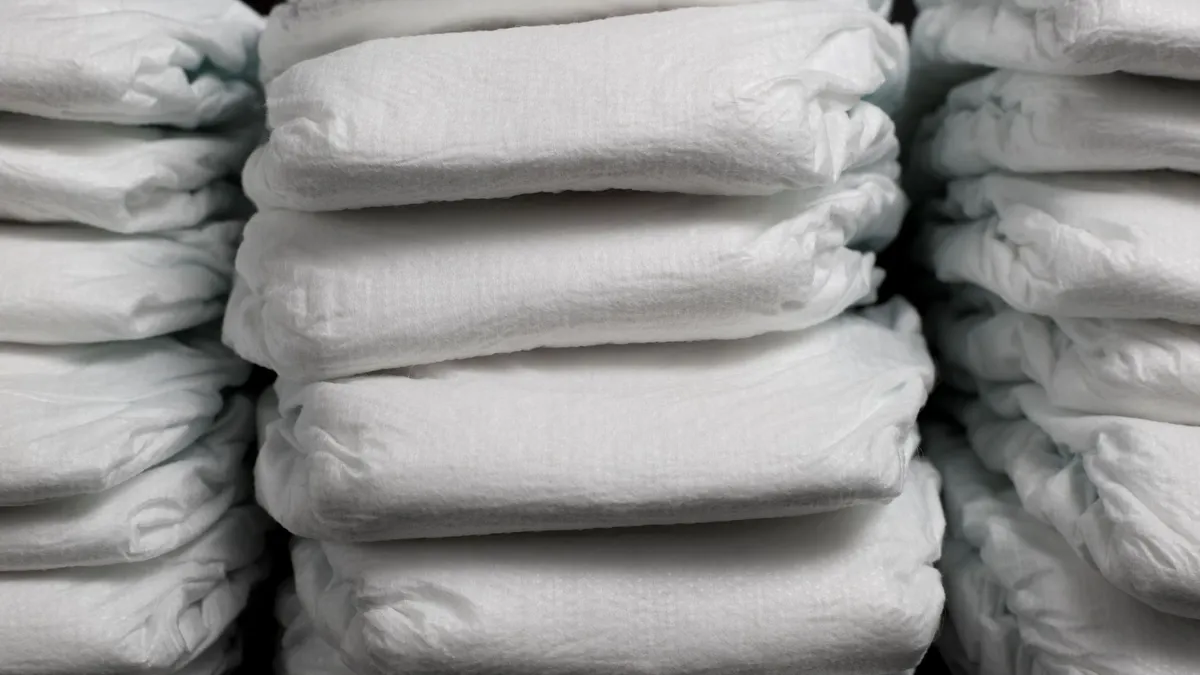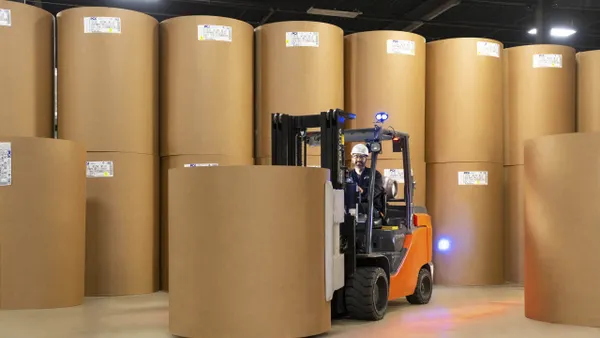Graphic Packaging International is a different company now than it was a decade ago, said CFO Stephen Scherger at the Wells Fargo Industrials & Materials Conference in Chicago on Wednesday.
Even though the transition to primarily serving consumer packaging markets has hit bumps at times, especially throughout global turbulence during the last five years, “We've really constructed a business that has a very high level of market stability,” he said.
GPI is emphasizing that stability as it ramps down a period of heavy capital investments once its new recycled paperboard mill in Waco, Texas, opens late this year. Simultaneously, the company is navigating broader economic uncertainty amid trade tensions and consumer spending fluctuations.
The company is “not completely insulated from tariffs,” but the direct impact on GPI is “relatively modest” and “measured in low millions of dollars,” Scherger said. There is also potential for broader impacts down the line, including from reciprocal tariffs. That could affect imports of paperboard from Europe, especially from Finland and Sweden, as well as GPI’s paperboard exports to its European business, such as for beverage packaging, he said.
Compared with Q1, sales volumes in the second quarter so far have been flat, which slightly exceeds expectations considering the projection for negative volumes, he said. Inflation and other cost pressures on consumers are a major influence for consumer packaged goods companies and quick-service restaurants, which comprise a large portion of business: food packaging is about 40% and beverage packaging roughly a quarter, Scherger said.
There's a lot of uncertainty for CPGs and QSRs right now, he said, adding that it is “unusual to have volume declines for a couple of years across the CPGs.” He referenced a sequence of challenging factors including the COVID-19 pandemic, supply chain snarls and inflation.
Even though “the consumer is, in fact, stretched” after years of cost pressures, GPI has “every expectation that volume for us — eating and drinking — will stay relatively stable,” Scherger said.
The beverage side of the business, in particular, holds stability and global growth momentum, he said. With consumer demand and sustainability trends in mind, GPI will continue to focus on growth through innovation, including for plastic replacement, such as customers swapping plastic or foam food service ware for GPI’s fiber versions. That market has been a growth driver and should continue to be in the coming years, Scherger said.
Considering all those factors, GPI is standing by the full-year financial guidance disclosed during its May earnings call, of adjusted earnings before interest, taxes, depreciation and amortization to be $1.4 billion to $1.6 billion. It now anticipates Q2 EBITDA of $330 million to $340 million, Scherger said.
Inventory reduction
Customers’ recent promotional activity has accelerated GPI’s sales volumes, Scherger explained. But such activity has been uneven as CPGs and QSRs monitor economic uncertainty and adjust strategies as needed.
Promotional activity has been limited, and that’s one reason the company is rationalizing production and paying attention to inventory levels, according to Scherger. GPI is “being very aggressive this quarter in taking production out of our infrastructure, to drive inventory out of the company,” he said.
Part of the inventory offloading plan is to cut some production ahead of Waco’s opening. That facility will be capable of producing 550,000 tons of CRB annually once it reaches full capacity.
The company announced in April that it would close its coated recycled paperboard manufacturing facility in Middletown, Ohio, as part of a longstanding plan to consolidate production at more high-tech mills in Kalamazoo, Michigan, and the upcoming facility in Waco. Once the latter facility opens, GPI also will close a recycled paperboard plant in East Angus, Quebec.
This consolidation and two competitors’ announcements of CRB facility closures in 2025 contribute to supply and demand rebalancing, Scherger said. He suggested that the North American CRB market has about 2.7 million tons of annual capacity, and the Middletown closure alone will take out 14% of that, roughly 390,000 tons; East Angus’s closure will pull out another 100,000 tons.
“The reality is the [market] will actually have less capacity, probably for the next year and a half [or] two years, and then equalize out as we bring Waco to life,” he said.
Pricing
GPI announced $40 per ton price increases for coated unbleached kraft and coated recycled paperboard, effective May 15. But those increases have not been recognized in monthly data from Fastmarkets RISI’s commonly used pricing index.
“There’s not traction on those at this point,” Scherger said. “So what we don't have in our hands today is a little bit of the positive price momentum that we want to have on that front, on the paperboard.”
The company is focused on realizing some pricing benefits in the coming months. “We must pivot to a modestly positive price environment,” Scherger said, explaining that the company currently is “in a modestly negative [environment] — it's modest, minus 1%. It needs to be plus one [or] plus two.”
GPI was the first major fiber producer to publicly declare that in 2025 it would stop using third-party pricing indexes for conditions in new sales contracts with paperboard customers. Instead, this year it began rolling out its own index and is working to implement it with all customers. GPI’s model is “very transparent,” Scherger said.
“We've got good momentum” on implementation, he said. “But that's a multiyear initiative, and that initiative just is in the early stages.”



